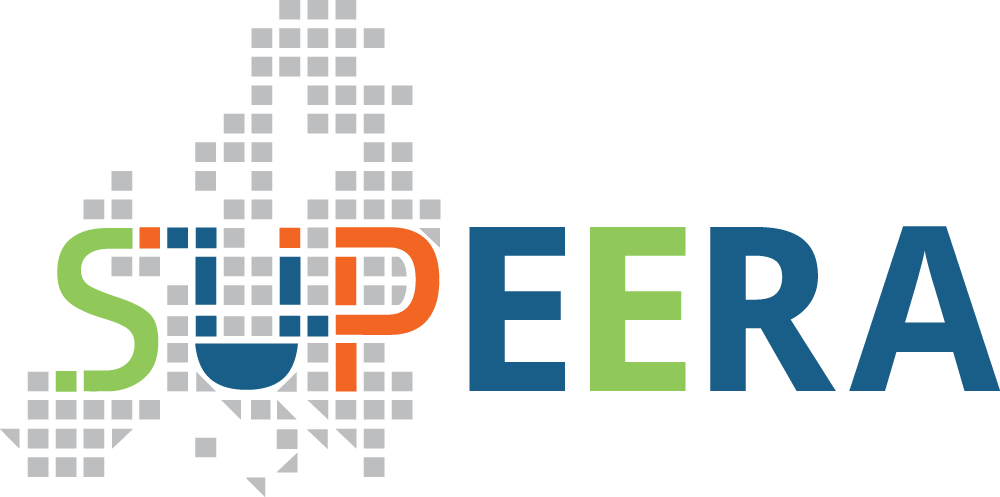How can research and industry get closer to accelerate innovation and uptake of new technologies in wind energy and hydrogen? How can best practices in one country be replicated to support Europe´s clean energy transition?

These were the questions at the heart of the online debate organised by the H2020 project SUPEERA on the 8th of October, when researchers from the EERA community and representatives from industry-driven platforms gathered for a discussion on how academia and industry can better cooperate to accelerate innovation and uptake of new technologies. The focus was on two technology areas, wind energy and hydrogen and the speakers were: Peter Eecen, Coordinator of the Joint Programme on Wind Energy at EERA; Alexander Vandenberghe, ETIP Wind platform; Stephen McPhail, Coordinator of the Joint Programme on Fuel Cells and Hydrogen at EERA; and Laurent Antoni, President of Hydrogen Europe Research.
The webinar offered an overview on the activities of SUPEERA, the project launched by EERA in early 2020 to support the implementation of the SET-Plan, integrating it at the same time into the broader context of the Clean Energy Transition. A part of the project has entailed the assessment of the National Energy and Climate Plans (NECPs) issued by the Member States: these present the strategies, objectives and activities to meet the EU´s energy and climate targets for 2030. The plans include different dimensions (decarbonisation; energy efficiency; energy security; internal energy market; research, innovation & competitiveness) and address an array of technologies.
The purpose of SUPEERA is to define six pathways– and to pilot them during the course of the project - covering a range of different realities in regional coverage, maturity and European industrial competitive sectors. These pathways will provide input for recommendations to support the Clean Energy Transition goals and to suggest policy measures, facilitating cooperation between research and industry. In this first webinar, two pathways were analysed by the SUPEERA team: hydrogen and wind.
These two energy sources were chosen due to the strong focus they have, both at European and national level, their relevance for EU strategy on clean energy, and the existing examples of cross-sector collaboration. The findings of the analysis developed by SUPEERA triggered the discussion amongst the panellists.
Key outcome of the discussion
Wind energy currently represents one of the main and most advanced renewable energy sources in Europe. However, a key area, offshore wind, has not yet been fully exploited while it holds great potential. The Commission is set to publish its Strategy for Offshore Renewable Energy by the end of the year, but the road ahead is still long. “The technology we have today cannot support the goals of the EU” stated Peter Eecen, Coordinator of the Joint Programme on Wind Energy at EERA. In addition, many barriers remain, hampering the adoption of the technology. Eecen underlined that these barriers, ranging from safety issues to environmental factors, need to be addressed together, otherwise they may halt or reverse the progress achieved so far. According to Peter Eecen, “technology alone will not make it”, as it will need a strong push from citizens as well.
Alexander Vandenberghe, from the ETIP Wind platform, supported this view and reinforced that industry and research need to “find areas where everybody agrees there is a need for collaboration”. While many projects focus on collaboration where public spending is involved, Vandenberghe highlighted that a significant part of collaborative initiatives happens outside of this scope. “40% of the revenues of research institutes come from bilateral partnerships with industries”, claimed Vandenberghe.
For its part, Hydrogen will be crucial for the energy transition, as it has the potential to act as a potential substitute for fossil fuels, while also attracting investments and creating jobs that will sustain its implementation. European focus on hydrogen has led to a new strategy published in July 2020 and to the launch of a European Alliance on Clean Hydrogen. Amidst all these initiatives, “the EERA Joint Programme on Fuel Cells and Hydrogen is trying to clarify the state of play for hydrogen” said Stephen McPhail, Coordinator of the Joint Programme. This Joint Programme has drafted an implementation plan to prioritise the next steps for research. One of the main objectives is to make research facilities accessible.
Laurent Antoni, President of Hydrogen Europe Research, highlighted that “Hydrogen is not a silver bullet, [but] is one of the energy vectors to be considered”. While Europe is currently a global leader in hydrogen, efforts in R&D must be supported further not to “lose competitiveness like [what happened with] batteries”. According to Antoni, the main challenges are commercial maturity and ensuring a safe deployment of clean hydrogen. To this end, research is called to play a major role in providing a low Technology Readiness Level (TRLs) solution, by addressing critical technical barriers and training engineers, technicians and operators.
The webinar showed, once more, how the relationship between industry and research still needs input to effectively produce results. However, this collaboration is crucial now more than ever due to the pressure that the COVID-19 pandemic has put on the EU. To make the recovery a reality, concrete actions are needed, and knowledge-sharing should be the cornerstone of this process.
This first webinar is part of a series of events that will explore other pathways and technologies (e.g. Energy Storage and Bioenergy) in the coming months. The SUPEERA long-term plan is to organise knowledge-sharing and knowledge-generation physical workshops as soon as conditions permit.
For further information about the topics discussed during the webinar, the recording and presentations can be found at the following page.
| Webinar Materials |